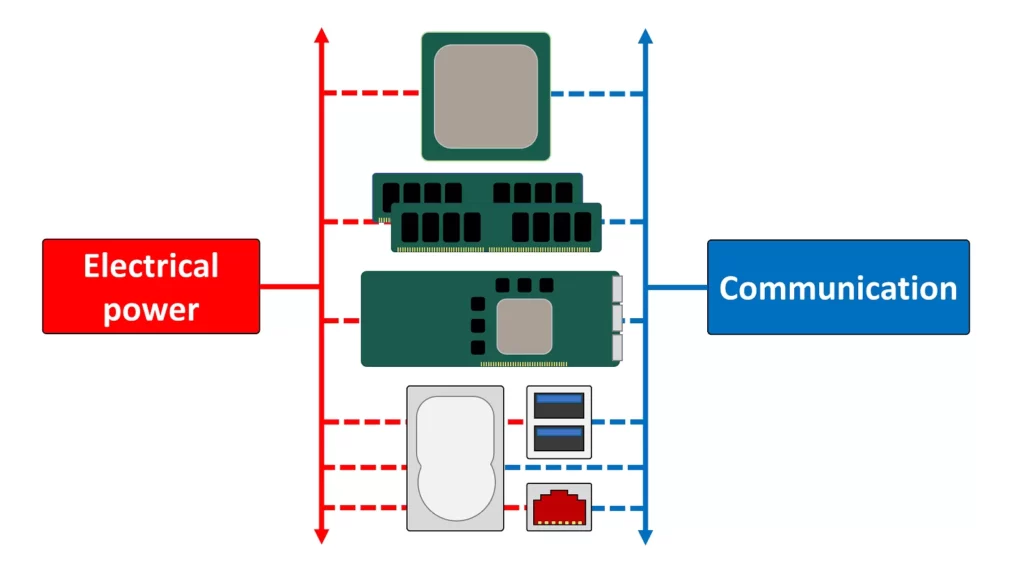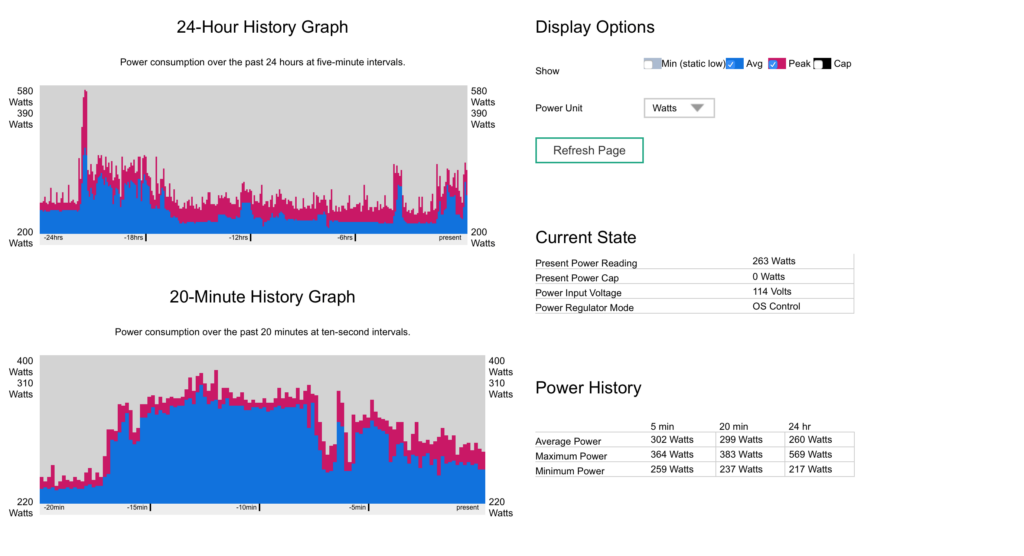The power usage of a motherboard depends on factors like the efficiency of its Voltage Regulation Modules (VRMs), integrated components, and standby power consumption, typically ranging from minimal to moderate levels.
In this comprehensive exploration, we delve deep into the question: How much power does a motherboard use? From dissecting its core functions to evaluating real-world implications, let’s embark on a journey to demystify motherboard power consumption and its multifaceted impact on your PC setup.
Table of Contents
Introduction:
In the realm of PC building and optimization, enthusiasts often scrutinize components like CPUs and GPUs while relegating the motherboard to a supporting role.
However, the motherboard’s significance in power distribution, regulation, and overall system stability cannot be overstated.
Understanding the Anatomy of Motherboard Power Consumption:

To comprehend the intricacies of motherboard power consumption, we must first dissect its fundamental components and their respective roles:
Voltage Regulation Modules (VRMs):
- Heart of Power Distribution: VRMs serve as the primary conduit for converting the raw power from your PSU into stable voltages required by crucial components like the CPU and memory modules.
- Efficiency Matters: The efficiency of VRMs directly influences power consumption, with higher efficiency translating to reduced power loss during voltage conversion and consequently, optimized energy utilization.
Integrated Components and Expansion Slots:
- Onboard Components: Motherboards often integrate essential components such as audio codecs, Ethernet controllers, and SATA controllers. While these components contribute to overall power consumption, their individual impact is relatively modest compared to core components.
- PCIe Expansion Slots: The PCIe slots on motherboards facilitate connectivity for GPUs, sound cards, and other expansion cards. Although the power draw of devices installed in these slots affects overall system consumption, it’s important to distinguish between motherboard power usage and that of installed peripherals.
Standby Power Considerations:
- Minimal Yet Meaningful: Even in a powered-off state, motherboards exhibit standby power consumption to sustain features like wake-on-LAN, USB charging, and BIOS settings retention. While this standby power usage is generally minimal, it underscores the motherboard’s continuous engagement in system operations.
Also Read: Asus Motherboard Bluetooth Not Working – Troubleshooting Guide!
Measuring and Mitigating Motherboard Power Consumption:
Quantifying the precise power consumption of a motherboard necessitates a nuanced approach, considering various factors and methodologies:
Evaluating VRM Efficiency:
- Quality Matters: Premium motherboards often boast superior VRM designs characterized by advanced power delivery solutions and robust cooling mechanisms. These attributes translate to higher efficiency and lower power dissipation, optimizing overall system performance and longevity.
Scrutinizing Integrated Components:
- Documentation and Disclosure: Motherboard specifications typically enumerate the power consumption of integrated components, offering insights into their individual contributions to overall power draw. While these values are relatively modest, they contribute cumulatively to the motherboard’s power profile.
Assessing Standby Power Consumption:

- Specification Scrutiny: Standby power usage is often delineated in motherboard specifications, providing users with visibility into the energy overhead incurred during system downtime. Additionally, measuring standby power with a wattmeter offers empirical validation of specified values and aids in optimizing energy-efficient configurations.
FAQ’s
1. What is the role of Voltage Regulation Modules (VRMs) in motherboard power consumption?
VRMs serve as the primary conduit for converting raw power from the PSU into stable voltages required by crucial components like the CPU and memory modules.
2. How does VRM efficiency impact motherboard power consumption?
Higher VRM efficiency results in reduced power loss during voltage conversion, leading to optimized energy utilization and lower overall power consumption.
3. Do integrated components on motherboards significantly contribute to power consumption?
While integrated components like audio codecs and Ethernet controllers contribute to overall power consumption, their individual impact is relatively modest compared to core components.
4. What is the significance of PCIe expansion slots in motherboard power usage?
PCIe slots facilitate connectivity for GPUs, sound cards, and other expansion cards. However, the power draw of devices installed in these slots affects overall system consumption, distinct from motherboard power usage.
5. How much standby power does a motherboard consume?
Even in a powered-off state, motherboards exhibit standby power consumption to sustain features like wake-on-LAN, USB charging, and BIOS settings retention. This standby power usage is generally minimal but continuous.
6. How can we evaluate VRM efficiency in motherboards?
Premium motherboards often feature superior VRM designs with advanced power delivery solutions and robust cooling mechanisms, resulting in higher efficiency and lower power dissipation.
7. Where can we find information on the power consumption of integrated components?
Motherboard specifications typically enumerate the power consumption of integrated components, providing insights into their individual contributions to overall power draw.
8. How can we measure standby power consumption on a motherboard?
Standby power usage is often delineated in motherboard specifications. Additionally, using a wattmeter offers empirical validation of specified values and aids in optimizing energy-efficient configurations.
9. What is the significance of scrutinizing VRM quality in motherboard selection?
VRM quality directly impacts power delivery efficiency, system stability, and overall performance. Opting for motherboards with superior VRM designs ensures optimized power consumption and longevity.
10. Why is it essential to differentiate between motherboard power usage and that of installed peripherals?
Distinguishing between motherboard power usage and peripheral power draw helps in accurately assessing overall system power consumption and optimizing energy-efficient configurations.
11. Can optimizing motherboard power consumption enhance overall system performance?
Yes, by understanding and mitigating motherboard power consumption, enthusiasts can optimize system performance, enhance energy efficiency, and prolong system longevity.
12. What role does the motherboard play in PC architecture and power distribution?
The motherboard emerges as a linchpin in PC architecture, orchestrating power distribution and regulation with finesse and precision. It’s not just a circuit board; it’s the beating heart of your digital domain, influencing system performance and stability significantly.
Conclusion
In the intricate tapestry of PC architecture, the motherboard emerges as a linchpin, orchestrating power distribution and regulation with finesse and precision. By unraveling the nuances of motherboard power consumption and adopting a discerning approach to component selection and configuration, enthusiasts can optimize system performance, enhance energy efficiency, and embark on a journey of exploration and innovation in the ever-evolving landscape of PC building. So, as you embark on your next PC build or upgrade endeavor, remember to elevate the motherboard from its supporting role to a pivotal position of prominence—it’s not just a circuit board; it’s the beating heart of your digital domain.